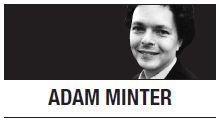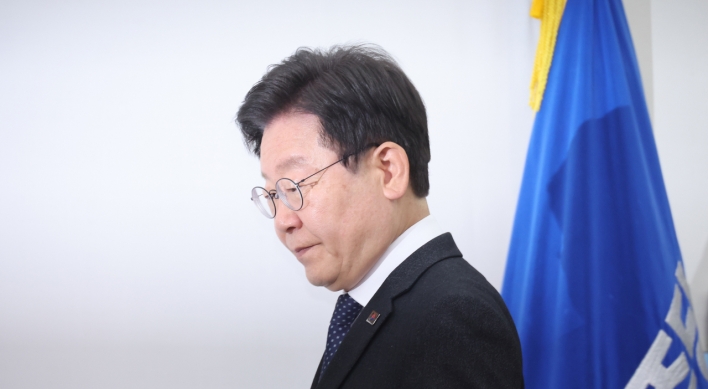 On the second floor of a 2,230-square-meter, used-goods superstore in the suburbs of Kuala Lumpur, Koji Onazawa pauses beside some old Japanese surfboards. He’s spent nearly two decades at Bookoff Corp. -- a corporate legend in Japan that’s barely known outside it, with 832 secondhand shops across the country.
On the second floor of a 2,230-square-meter, used-goods superstore in the suburbs of Kuala Lumpur, Koji Onazawa pauses beside some old Japanese surfboards. He’s spent nearly two decades at Bookoff Corp. -- a corporate legend in Japan that’s barely known outside it, with 832 secondhand shops across the country. Now he’s running Jalan Jalan Japan, the company’s first true foray into selling more than just used books abroad. “We’re not a representative of Bookoff here,” he says. “We’re a representative of Japanese secondhand goods.”
He’s not being melodramatic. According to data supplied by the Japan Re-use Business Journal, more than two dozen Japanese companies have set up at least 62 shops or distributorships selling secondhand Japanese goods in eight Southeast Asian countries in recent years. (Bookoff plans to open four more superstores in Malaysia alone in the next three years.)
Those stores receive much of the nearly $1 billion in used goods that Japanese companies legally exported in 2015 (illegal shipments were at least as large). While Japanese secondhand goods will never overtake new ones in Southeast Asia or elsewhere, they’re rapidly growing into a multibillion-dollar industry -- and one of Asia’s most surprising export growth stories.
The used goods trade is as old as capitalism, of course. In fact, its down-market reputation is relatively recent -- a result of the industrial revolution, mass-market production and the introduction of the endless upgrade cycle.
In Japan, public perceptions of secondhand goods soured in the 1950s as consumers embraced Japan’s new wealth and flashy products. By the time Bookoff was founded in 1991, Japanese were hooked on the upgrade cycle, secondhand goods were synonymous with pawnshops, and used bookstores were niche businesses popularly perceived as dingy and dark.
After Japan’s bubble burst and consumers starting looking for bargains, Bookoff upended that image. Their stores feature bright lighting, wide aisles and well-organized shelves filled with books that look new (thanks to a machine that shaves off yellowed and frayed edges). To a contemporary American visitor, the shops don’t look much different than a Target, Walmart, or -- if you squint -- a Uniqlo. Thanks to Bookoff and its many imitators, secondhand retail now accounts for 4.36 percent of Japan’s total retail market. (For luxury brands, secondhand accounts for more than 10 percent of the market.)
Bookoff eliminated not only the shame associated with buying used goods, but that of selling one’s unwanted stuff. Their cheery slogan -- “Please sell us your things” (it sounds better in Japanese) -- and friendly, customer-centric store clerks eased doubts among middle-class Japanese who wouldn’t have been caught dead near a pawnshop.
Today, Bookoff executives consider their ability to source high-quality goods one of the company’s great competitive advantages. They might even be too good. In 2015, the company bought 489 million individual items from its customers, while it was “only” able to sell 331 million of them. And a bigger problem is looming: Japan’s fading demographics mean that more stuff is likely to come to market, with fewer people to buy. Put differently, hand-me-downs in a country with a shrinking population don’t have much of a future.
To deal with that surplus, Bookoff decided that it needed to export. Southeast Asia seemed like the ideal location, given the region’s long-standing ties to Japan and -- in cities at least -- consumers’ strong affinity for Japanese products. Additionally, the region’s large families, big (by Japanese standards) homes, and upwardly mobile consumers mean demand for middle-class consumer goods is growing rapidly.
Sure enough, on a recent weekday visit, I found Bookoff’s first Malaysia store packed with mothers and young children, browsing secondhand stuffed animals (most sell for less than $1), women’s clothes (averaging $2.30 per item), flatware (a set of plates for around $1.50), strollers, car seats, bassinets, handbags and shoes -- none of which had sold in Japan.
On a monthly basis, the shop sells 15,000 items of women’s clothing alone, while 25 percent of overall sales come from children’s items. Of course, many of those secondhand Japanese goods were manufactured in China. But, according to Onazawa, that doesn’t matter: “They were used in Japan, so they’re good in the eyes of the Malaysian customers.”
Selling 15,000 articles of women’s clothing per month will only put a small dent in Bookoff’s surplus of used goods, of course. But Jalan Jalan Japan is just the start. In addition to its four planned stores, the company may eventually open a logistics base for secondhand goods in Malaysia and possibly even begin buying and selling Malaysian goods. For Southeast Asians, old stuff may soon be the new thing.
---
By Adam Minter
Adam Minter is a Bloomberg View columnist. -- Ed.
(Bloomberg)
-
Articles by Korea Herald




![[Herald Interview] 'Amid aging population, Korea to invite more young professionals from overseas'](http://res.heraldm.com/phpwas/restmb_idxmake.php?idx=644&simg=/content/image/2024/04/24/20240424050844_0.jpg&u=20240424200058)












![[KH Explains] Korean shipbuilding stocks rally: Real growth or bubble?](http://res.heraldm.com/phpwas/restmb_idxmake.php?idx=652&simg=/content/image/2024/04/25/20240425050656_0.jpg&u=)

